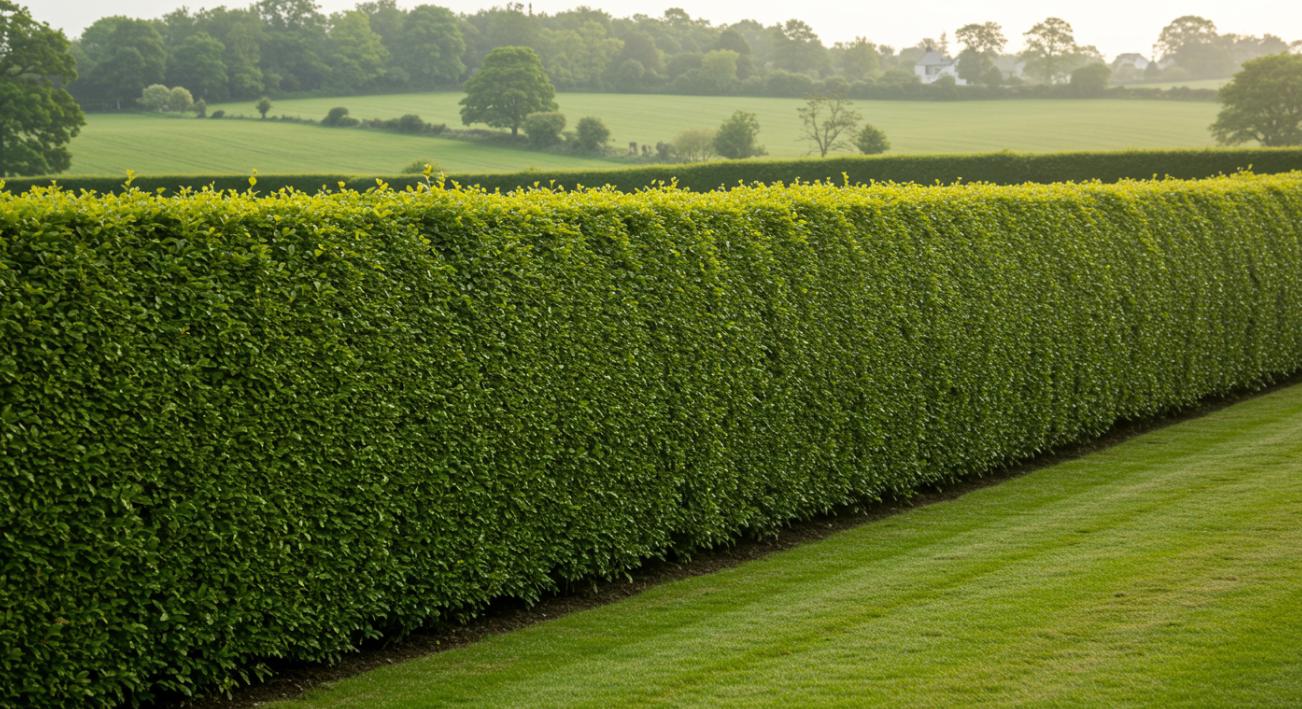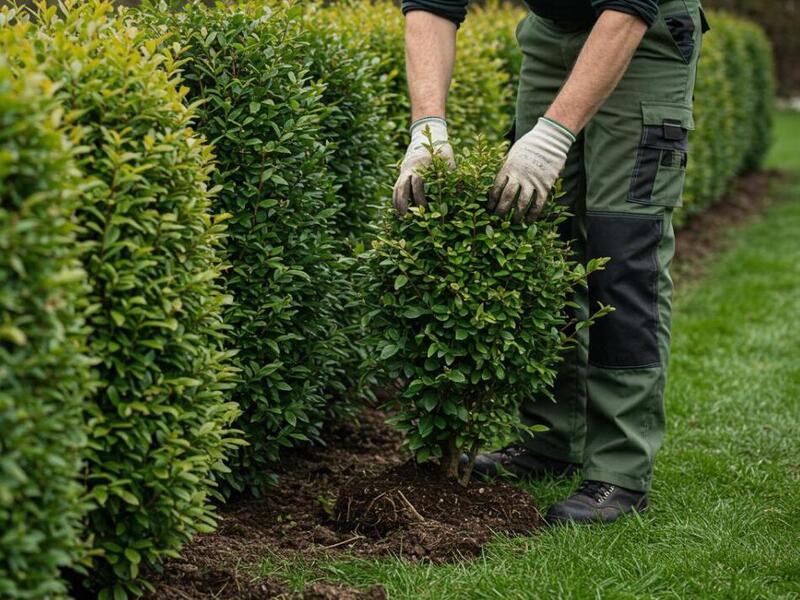
You want to make your outdoor area an impressive and peaceful retreat? Planting hedges is a great way to create a thick, healthy green wall for better privacy and beauty. By following simple advice, you can grow full hedges that also help block noise and give homes to local animals. Discover how to choose the best plants, space them correctly, and care for your hedges for the best look and long life.
Choosing the right hedge species
Choosing the right plants is very important when you estab![]() lish a hedge. Different plants grow at different speeds, need different care, and look different. Knowing your weather, soil, and what you want the hedge for will help you pick the bests.
lish a hedge. Different plants grow at different speeds, need different care, and look different. Knowing your weather, soil, and what you want the hedge for will help you pick the bests.
Consider growth habits
Some hedges grow quickly, providing rapid coverage, while others take their time. If you want immediate results, consider species like leyland cypress or privet.
For slow and steady growth that requires less frequent trimming, options like boxwood or yew can be ideal.
Evaluate climate requirements
Different hedge types thrive in various climates. For example, arborvitae and holly prefer moist conditions, while lavender and rosemary adapt well to drier environments. Ensure the plants you choose are suited to your local climate conditions to promote healthy growth.
Planning and preparing your space
A successful hedge involves more than simply planting; careful planning and preparation are essential. Assessing your garden layout and considering plant spacing will ensure your hedge develops properly.
Determine ideal hedge placement
Selecting the best spot for your hedge is key. Make sure to plant it where it will get enough sunlight, as this is crucial for healthy growth. Stay away from areas with very hard soil or poor drainage, because these conditions can stop the hedge from growing properly.
Soil preparation
Healthy soil contributes significantly to your hedge’s growth. So test the soil pH and nutrient levels. If necessary, amend the soil with compost or organic matter to enhance fertility and improve drainage.
Proper soil preparation encourages robust root development, ensuring your hedge thrives. This table indicates the recommended soil types for different hedge species, based on their growth rate.
|
Hedge plant |
Growth rate |
Soil preference |
|---|---|---|
|
Leyland cypress |
Fast |
Well-drained |
|
Boxwood |
Slow |
Moist, well-drained |
|
Arborvitae |
Moderate |
Moist, well-drained |
|
Lavender |
Slow to moderate |
Sandy, well-drained |
|
Privet |
Fast |
Well-drained |
Proper planting techniques
The planting process itself is very important for a healthy hedge. If you plant them at the right depth and space them correctly, your hedge will grow well and have a good shape.
Spacing for optimal growth
Proper spacing is vital to ensuring your hedge develops adequately without overcrowding. As a general rule, position plants according to their mature width. For instance, if a shrub is expected to reach six feet wide, space them three feet apart. This practice will ensure good airflow and light penetration, which are essential for growth.
Planting depth
When planting, make sure to dig a hole twice the width of the root ball but no deeper. This ensures that the roots can spread out while the base of the plant remains visible above ground. Ensure that the top of the root ball sits level with the soil surface to avoid issues such as root rot.
Watering and fertilization practices
If you care for your hedge properly as it grows, it will become healthier and stronger. You need to understand the plants’ watering and fertilization needs.

Watering guidelines
Newly planted hedges require regular, deep watering to encourage root establishment. Aim for a minimum of one inch of water per week, adjusting based on rainfall conditions. Monitor the soil’s moisture levels, ensuring it remains consistently damp but not waterlogged.
Fertilization timing
Feeding your hedge during the growing season can promote healthy growth. Use a balanced fertilizer and apply it in spring just as new growth begins. Follow package instructions for dosage to avoid over-fertilizing, which can lead to leggy growth.
Maintaining your hedge for long-term health
Consistent maintenance is essential for keeping your hedge dense and healthy. Regular pruning, monitoring pests, and other upkeep will enhance its longevity.
Pruning techniques
Pruning should be approached carefully. Remove dead or damaged branches and trim new growth for denser foliage. The ideal time to cut back most hedges is in late winter or early spring, before the new growth season. Shape the hedge with a natural taper, wider at the base, to ensure even sunlight exposure.
Pest and disease management
Regularly inspect your hedge for signs of pests or disease. Early detection is key to addressing issues before they escalate. Use organic sprays or consult local gardening experts for pest management techniques suitable for your hedge plants.
By planning carefully, planting correctly, and taking care of your hedge, it will become a thick, lively green wall that improves your yard.











